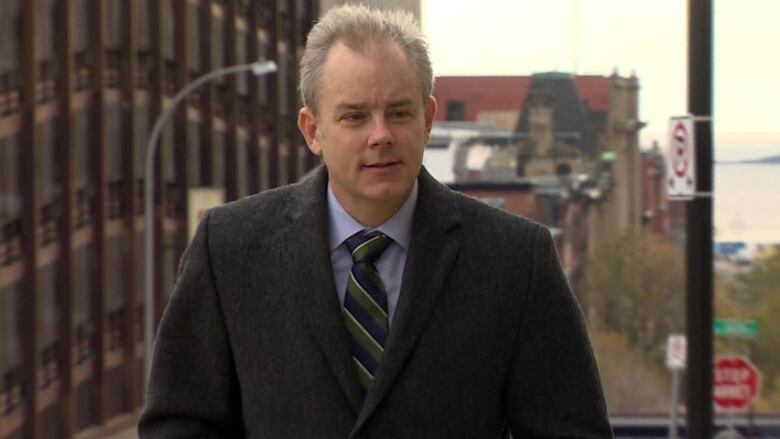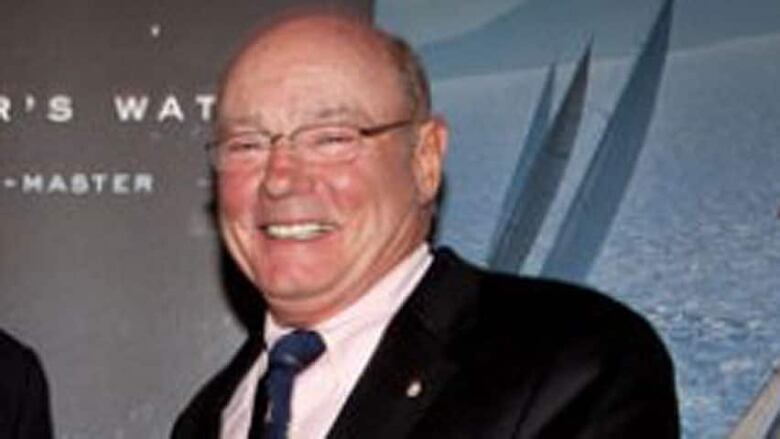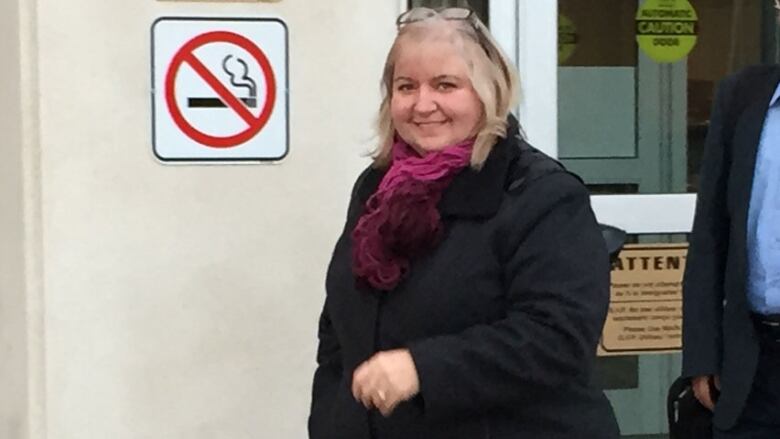'Minimal' chance Richard Oland's missing cell was in Saint John, jury told
Final text received by iPhone was transmitted by tower in Rothesay, Dennis Oland's murder trial hears

It's highly unlikely Richard Oland's missing iPhone4was still in his Saint John office when it received its last message on the night police believe he was killed, the jury at Dennis Oland's second-degree murder trial heard on Wednesday.
Joseph Sadoun, the director of engineering for the wireless division ofYves R. Hameland Associatesin Montreal, testified that cellphones usually connect with whichever cell tower will provide the best quality signal.
- Live blog:Dennis Oland's second-degree murder trial: Nov. 18
- On mobile? Get live coverage of the trial here
As a general rule, that would be whichever cell tower is closest, said Sadoun, who helps design cellphone networks and was declaredan expert by the court in how cellphone networks operate.

It was transmitted by a cell tower inRothesay, which is about a 20-minute drive away from his Saint John office.
Crown prosecutor Derek Weaver asked Sadoun what the chances were that a phone located in the city's uptown would communicate with a tower in Rothesay. "Minimal," replied Sadoun.
He listed four other towers in the Saint John area that would have provided better service.

The 69-year-old prominent businessman,whose investments were worth about $36 million,hadsuffered 45 sharp and blunt force injuries to his head, neck and hands.
DennisOland, 47,who was the last known person to see his father alive during a meeting at his Canterbury Street office the nightbefore, has pleaded not guilty to second-degree murder in his death.

Oland said he drove home to Rothesay, stopping briefly at Renforth Wharf on his wayto see if his children were there swimming.
Thewharf is located near the Rothesay tower his father's cellphone pinged off.
Two witnesses have describedseeing Olandstopping near the wharf to pick something up off the ground, walking to the end of the wharf, sitting down, putting the item he had picked up in a reusable grocery bag he was carryingand then walking briskly back to his car and driving away.
Search for iPhone produced 'roaming error'
Earlier Wednesday, the Court of Queen's Bench heard thatRogers Communications officials attempted to help Saint John police in locating RichardOland'smissingcellphone on July 9, 2011, but received a "roaming error" message.
That could mean one of three things, according to an agreed statement submitted into evidence by the Crown and defence:
- The phone is registered on a foreign network with which Rogers doesn't have a roaming agreement.
- Rogers hasno indication where on the network to reach out to in order to locate the device because records of itslocation havebeen purged due to a period of inactivity, with no calls, texts or data access.
- The locationcan't be obtained for "some unspecified reason."
SylvieGill, an investigator with Rogers, told the court the company has alaw enforcement support unit that routinely assists police to locate cellphones in emergencies, such as missing person cases.
They can use a program to "ping" a cellphone to get a geographiclocation in real time, she said.

But the attempt failed, coming back with a "roaming error" message, said Gill.
There are two other possible failcodes: absent subscriber and unrecognized subscriber, she said.
An agreed definition of "absent subscriber" was also submitted into evidence by the Crown and defence. It "could mean" the cellphone is off, out of the coverage area or unregistered, the agreement states.
If a cellphone can't be located, Rogers can also look at the subscriber's "call detail records" to determinethe last usage and the cell tower used, said Gill.
Oland's records show Sedlacektried to reach himseveral more times after 6:44 p.m. on July 6, but hisphone hadstopped receiving calls and texts.
Defence lawyer Alan Gold asked whether the network continues to try to deliver messages for three days. Gill confirmed that is true.
Gold suggested the undelivered messages sent to Olandon July 6 to7 could have been delivered on July 9 to10. Gill agreed it was possible,but added thatpolice only requested his records for July 6 to7.












_(720p).jpg)


 OFFICIAL HD MUSIC VIDEO.jpg)
.jpg)



























































































